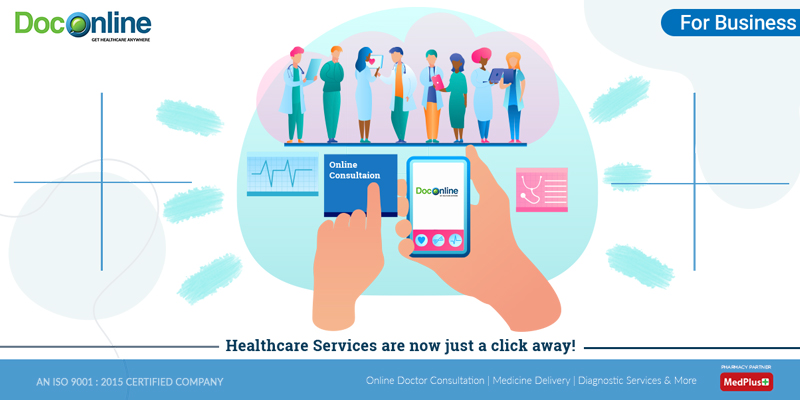How Subscription Based Healthcare is Reinventing Patient Accessibility to Services
How Subscription Based Healthcare is Reinventing Patient Accessibility to Services
Blog Article
Understanding the Cost-Effectiveness of Subscription-Based Health Care Versions
As the medical care landscape progresses, subscription-based designs arise as a compelling option, promising to redefine exactly how individuals take care of medical expenses. Assessing these designs' cost-effectiveness requires a nuanced contrast with traditional insurance coverage, thinking about both economic implications and person fulfillment.
Summary of Subscription-Based Versions
Subscription-based medical care versions, in some cases described as direct medical care or attendant medicine, are significantly obtaining focus as a prospective option to ineffectiveness within conventional healthcare systems. These designs operate the principle of offering patients direct access to medical care providers via a annual or regular monthly fee, bypassing the need for standard insurance devices. This setup intends to enhance patient-provider communications by minimizing management problems, which often impede timely and personalized treatment.
At the core of subscription-based designs is the focus on a more personalized person experience. People take advantage of enhanced access to their physicians, often consisting of next-day or same-day appointments, prolonged consultation times, and straight communication channels such as phone or video calls. This model promotes an aggressive strategy to medical care, where carriers and people can collaboratively concentrate on preventative care and persistent illness administration.

Price Comparison With Standard Insurance

One of the primary monetary advantages of membership designs is openness in prices. People pay a foreseeable fee, which can simplify budgeting and financial planning. Furthermore, these designs generally eliminate co-pays and deductibles for covered services, minimizing out-of-pocket costs. On the other hand, conventional insurance coverage may be a lot more useful for people needing specialized care or expensive treatments not covered under a registration version, as they profit from the more comprehensive protection network and cost-sharing mechanisms.
However, cost-effectiveness is context-dependent. While registration versions might provide financial savings for those primarily needing medical care, people with persistent problems or specialized health care requirements may discover traditional insurance coverage more comprehensive. For that reason, reviewing particular health care needs and potential usage is important in determining one of the most cost-effective alternative for people.
Effect On Client Fulfillment
Individual fulfillment within subscription-based health care versions often mirrors a significant renovation over traditional insurance coverage systems. This improvement is primarily credited to the personalized treatment and ease of access these versions supply. Individuals frequently report higher contentment as a result of reduced delay times and the simplicity of organizing appointments. Unlike traditional systems, where patients might experience hold-ups in receiving care, subscription-based versions guarantee more straight and timely communications with doctor.
Furthermore, the openness in expenses related to subscription-based medical care minimizes the common stress associated with unanticipated charges and intricate billing procedures seen in conventional insurance (subscription based healthcare). Individuals value knowing the precise monetary commitment upfront, causing raised trust and confidence in navigate here their health care monitoring
In addition, the focus on preventative treatment and health in membership designs adds to boosted health results, additionally boosting individual satisfaction. By focusing on ongoing health care rather than episodic care, patients experience an even more constant and all natural healthcare journey.
Furthermore, the boosted provider-patient partnership cultivated in these versions, identified by more time spent per client and tailored attention, plays a crucial function in raising patient satisfaction degrees, as patients really feel really cared for and understood.
Provider Perspectives and Experiences
From the service provider's point of view, subscription-based healthcare designs use a transformative method to Visit This Link delivering clinical services. These versions highlight a preventative and positive health care technique, allowing suppliers to concentrate on detailed client treatment without the restrictions of traditional fee-for-service setups (subscription based healthcare). This shift in emphasis typically results in boosted person outcomes and increased service provider fulfillment, as medical care specialists can designate even more time and resources to individual engagement and individualized care strategies
Additionally, subscription versions assist in foreseeable income streams, which improve financial security for doctor. This predictability allows for boosted source preparation and allotment, contributing to a more efficient health care distribution system. Carriers can buy personnel facilities, training, and innovation renovations, consequently enhancing the top quality of care provided.
However, the transition to subscription-based designs is not without challenges. Companies should adjust to new functional structures, which can include significant adjustments in billing techniques and person administration systems. In addition, there is a fundamental need for robust data management to track client end results and guarantee high quality treatment. In spite of these difficulties, several providers discover that the benefits of raised patient communication and streamlined procedures outweigh the initial challenges, making subscription-based versions an appealing choice.
Future Leads and Challenges

A main obstacle is regulative compliance, as registration models need to follow developing health care plans and insurance policy requirements. This requires continual adjustment and innovation to guarantee alignment with lawful requirements. Furthermore, integrating these versions into existing medical care facilities can be intricate, needing significant financial investments in technology and training.
There is likewise the prospective danger of developing injustices in medical care gain access to, as membership designs could prefer those who can afford them, leaving at risk populations underserved. Resolving this requires thoughtful factor to consider of prices methods and subsidy mechanisms to ensure inclusivity.
Final Thought
Subscription-based healthcare versions offer a viable option to traditional insurance coverage by offering economic predictability and transparency, particularly benefiting people with chronic conditions or regular medical care requirements. The cost-effectiveness of these designs is contingent upon individual medical care usage patterns and situations.
Subscription-based healthcare versions, in some cases referred to as direct key care or attendant medicine, are increasingly acquiring attention view it as a possible solution to inadequacies within typical health care systems. Unlike conventional systems, where patients may experience hold-ups in obtaining care, subscription-based versions make sure even more prompt and straight interactions with medical care suppliers.
These versions highlight a preventative and positive medical care method, enabling companies to focus on extensive individual treatment without the restraints of conventional fee-for-service setups. As these models continue to get traction, they offer the prospective to change client access to care, enhance solution shipment, and maximize healthcare investing.Subscription-based medical care designs offer a sensible alternative to traditional insurance by using monetary predictability and transparency, especially profiting individuals with persistent conditions or regular health care needs.
Report this page